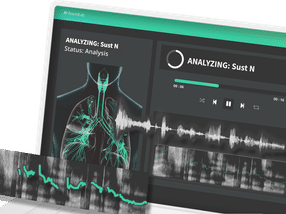Phosphorylated Akt isoforms revealed as novel cancer biomarkers by Duolink
The PI3K/Akt signal transduction pathway plays an important role in cancer progression and cell survival. A recent paper from John Bartlett’s research group now describes the use of in situ PLA as a tool to distinguish between the different activated isoforms of Akt in tissue from cancer patients. Potentially these findings could be used as a biomarker in diagnosis of breast cancer.
“In principle in situ PLA could work for any kind of tissue. The tricky part is to optimize the protocol; antibody selection and titration are key factors influencing success,” says John Bartlett, principal investigator behind the study.
Bartlett and colleagues selected tissues from nearly 2,000 primary breast cancer biopsies and used a combination of antibodies that recognize phosphorylated Akt and either Akt1 or Akt2. They could then, for the first time in tissue, distinguish and quantify the amount of activated Akt isoforms. The results indicate that phosphorylation of Akt1 is associated with a poor prognosis in early breast cancer and that additional activation of Akt2 may partly reverse the effect, showing how important it is to distinguish between these two.
“PLA provided us with a valuable tool to distinguish between the different phosphorylated isoforms of Akt,” John Bartlett comments.
Potentially the difference in activation of Akt isoforms could be translated to diagnostics. Previously tumors with high levels of Akt1 have been associated with tamoxifen and doxyrubicin resistance, explaining the poor prognostic outcome. John Bartlett and his team are profiling the Akt-pathway further in order to identify additional biomarkers that can be used both as diagnostic and prognostic tools. Detailed mapping of the activating players of the pathway also provide potential targets for drug development.
Other news from the department research and development

Get the analytics and lab tech industry in your inbox
By submitting this form you agree that LUMITOS AG will send you the newsletter(s) selected above by email. Your data will not be passed on to third parties. Your data will be stored and processed in accordance with our data protection regulations. LUMITOS may contact you by email for the purpose of advertising or market and opinion surveys. You can revoke your consent at any time without giving reasons to LUMITOS AG, Ernst-Augustin-Str. 2, 12489 Berlin, Germany or by e-mail at revoke@lumitos.com with effect for the future. In addition, each email contains a link to unsubscribe from the corresponding newsletter.






























































